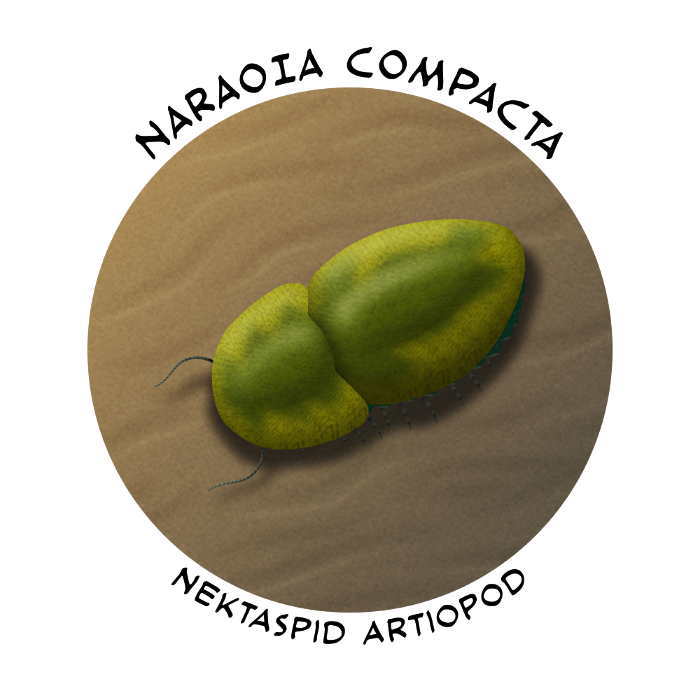The nektaspids were one of the most unique-looking groups of artiopodans, with soft-shelled unmineralized bodies, no eyes, and large head and tail shields with very few actual body segments in between – varying from 6 all the way down to none at all.
First appearing in the fossil record around 518 million years ago, only a few different species are known but they appear to have been abundant animals distributed in outer shelf waters worldwide during the Cambrian.
Their classification has traditionally been uncertain but specimens with well-preserved limbs show very trilobite-like leg anatomy, helping to place them in the artiopodans as potentially some of the closest “trilobitomorph” relatives to the actual trilobites.

Naraoia compacta was one of the nektaspids with no thorax segments at all, having a semicircular head shield and a large oval tail shield. Up to 4cm long (1.6″), exceptional soft-part preservation shows it also had sideways-pointing antennae and biramous limbs with large paddle-like gill-fringed flaps.
It’s known from various Cambrian sites around North America, most famously the Canadian Burgess Shale deposits (~508 million years ago). Additional fossils from the similarly-aged Chinese Kaili Biota and the older Australian Emu Bay Shale (~514 million years ago) represent either even more occurrences of Naraoia compacta or a very similar closely related species in the same genus.
It was probably a bottom-dwelling animal, possibly a burrowing deposit feeder eating organic matter in seafloor mud.
One Australian Naraoia specimen shows some of the earliest direct evidence of predation in the fossil record, with a distinct bite taken out of the carapace – thought to have been inflicted by a large radiodont.

The evolutionary relationships of Aaveqaspis inesoni are unclear, but its general body shape suggests it may have been one of the few-segmented nektaspids.
Known from the Sirius Passet fossil deposits in Greenland (~518 million years ago), it was about 2.5cm long (1″) and had a trilobite-like shape with an eyeless semicircular head shield, five thorax segments, and a tail shield bearing two huge backwards-pointing spines.
Nektaspids were a surprisingly long-lived group of non-trilobite artiopodans, surviving through multiple mass extinction events and lasting at least until the late Silurian about 420 million years ago. The last known member was another Naraoia species in North America, Naraoia bertiensis.
